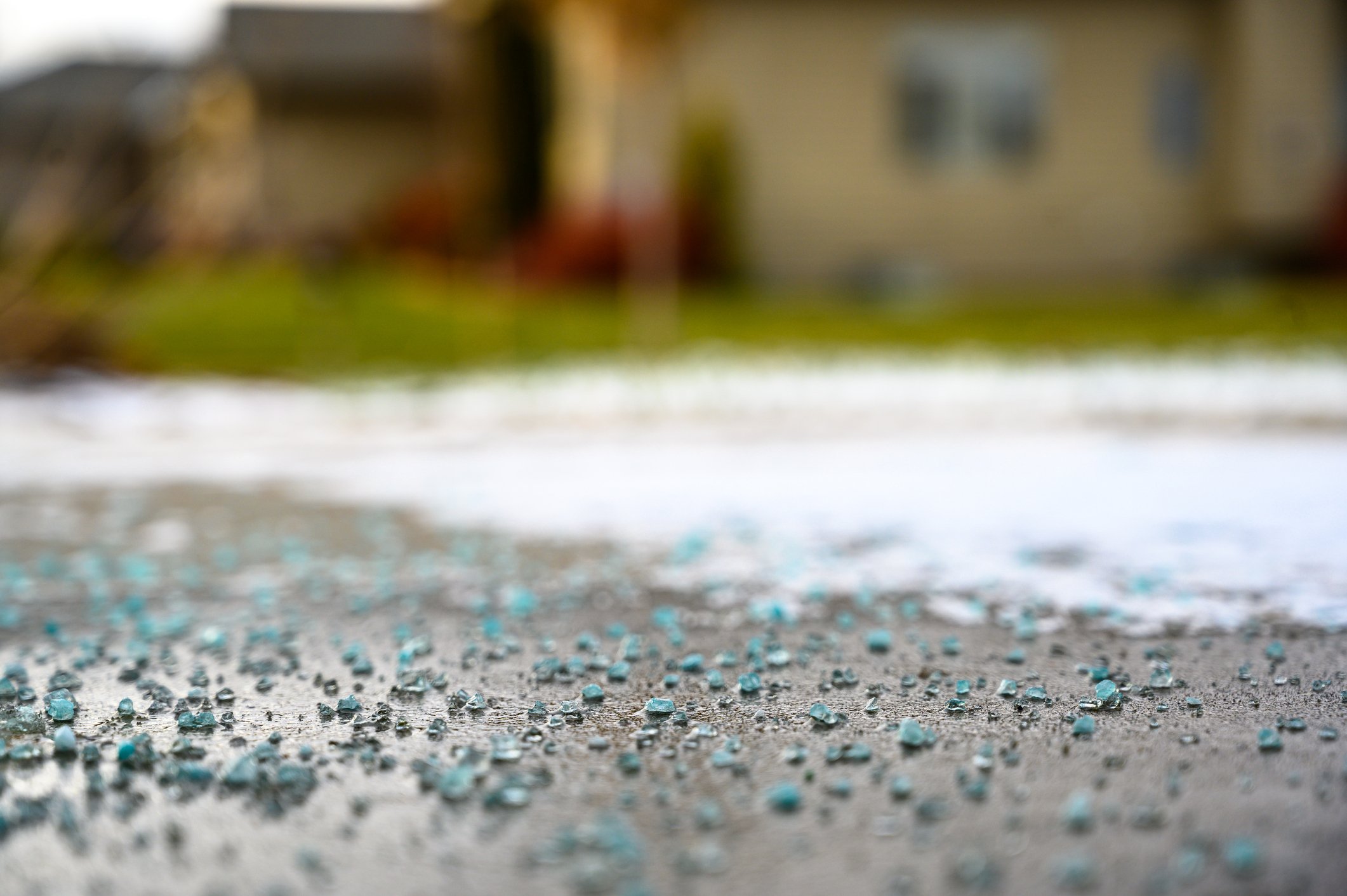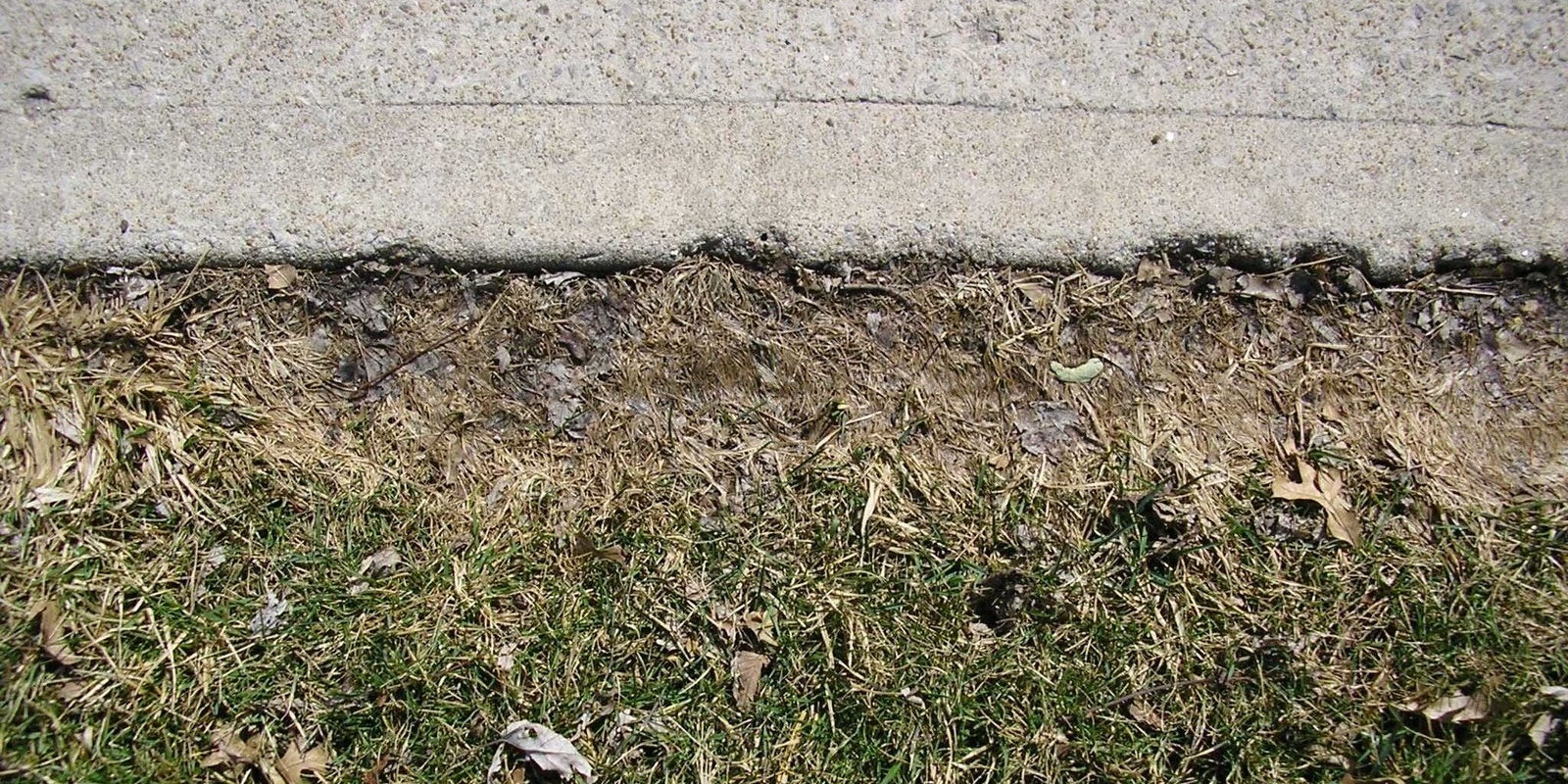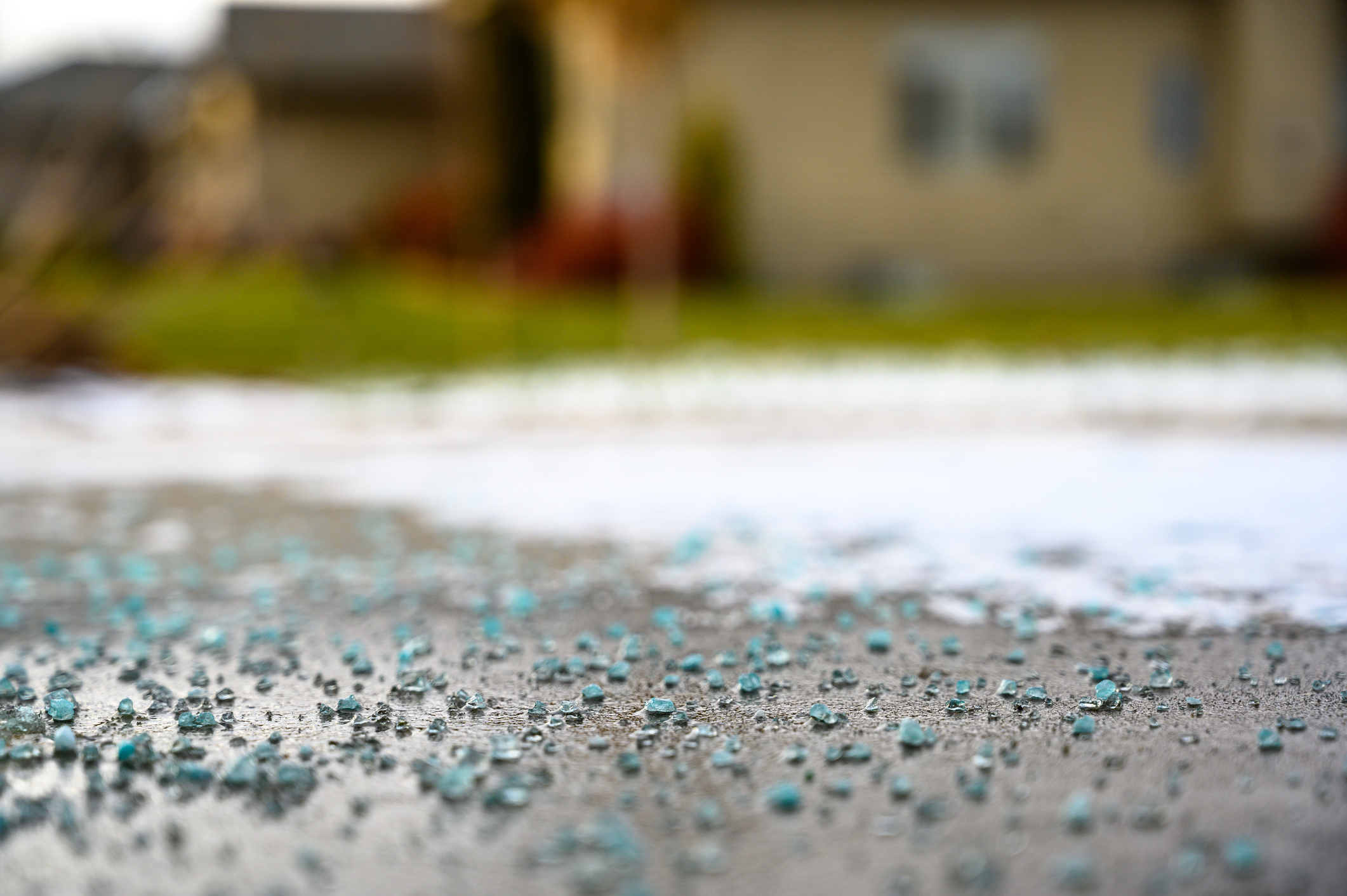
Lawns suffer enough from the damaging effects that snow and ice can cause over the winter months. To add insult to injury, adding road salt and sidewalk ice-melter to the equation can make things even worse. Areas of the lawn along the edges of sidewalks, boulevards and driveways are often left damaged in the spring when the snow melts, leaving homeowners struggling for answers.
The Damage
Road salts and ice melters are effectively used to prevent the buildup of snow and ice during the winter months, however the concentration of these salts that accumulate in areas where snow is piled can be very hard on the lawn and the soil. Salt accumulation removes moisture from the soil preventing it from getting to the plants roots. When this happens, plants become dehydrated and die. Salt accumulation also prevents and blocks the plant from absorbing the essential nutrients it requires to grow healthy including potassium, calcium, and magnesium, instead absorbing sodium and chloride that can become toxic.
You can see this perfectly encapsulated in the photo below.

Avoid Salt Damage With These Tips
1. Shovel quickly: When you shovel your driveway or walkways promptly, the snow doesn't have as much time to turn into ice or slush, thus reducing the amount of salt needed to keep your driveway free and clear.
2. Spread the snow: Spreading the snow out lessens salt concentration, minimizes soil compaction, accelerates melting and makes your property look cleaner. It's a win across the board!
3. Don't Over-Salt: When salting your property, always follow the recommended spreading rate on the bag. Doing this will help to prevent excess salt from building up on your lawn or leaching into your soil, while also saving you money as the supply will last longer.
4. Create Barriers: If you have plants growing near the street or walkway, try putting up a barrier of burlap cloth to keep the salt from getting in the planting beds. These barriers can minimize salt spray and help protect your lawn this winter
Recovery
.png?width=1024&name=Flush%20salt-damaged%20areas%20(1).png)
To help encourage a quick recovery, aggressively flushing the salt damaged areas with deep water soakings can help leach away the salt below the lawns roots level. Core aeration and overseeding practices can also help re-establish turf in the damaged areas. An application of Gypsum will also help free up and break down the salt accumulation in the soil.
Talk to our team of lawn care experts about maintaining a healthy lawn during Winter. For more lawn care tips and tricks, follow us on Facebook or Instagram.







.png?width=1024&name=Flush%20salt-damaged%20areas%20(1).png)
